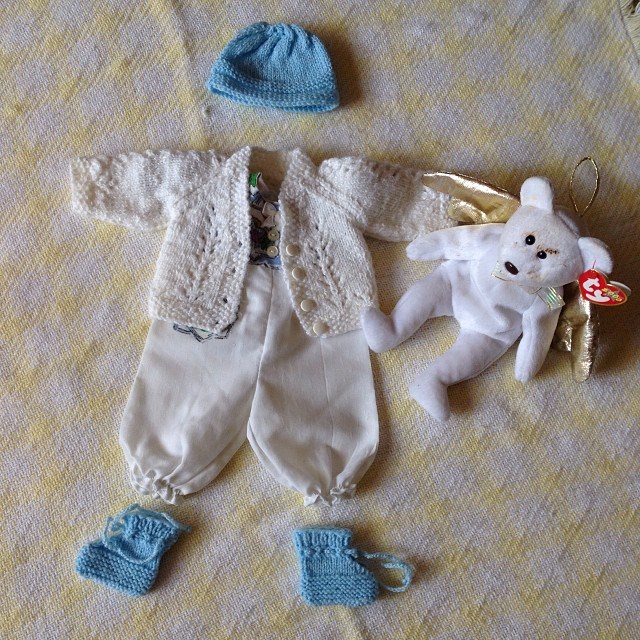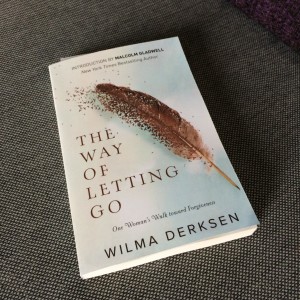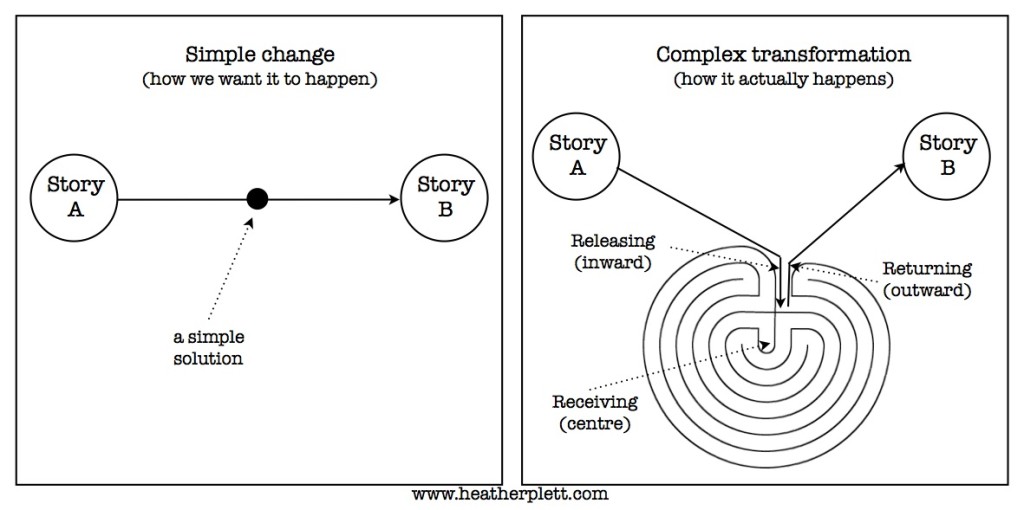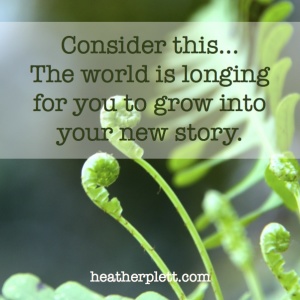The lessons I’m learning about holding space and letting go in the middle of a big life change
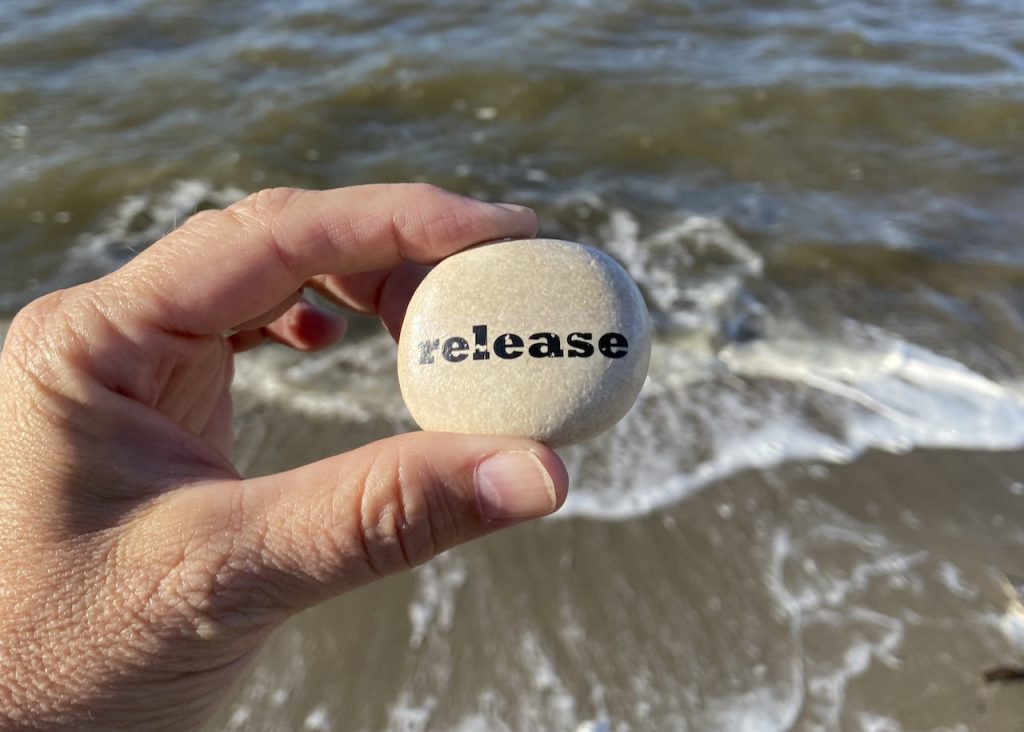
I’m at the airport, ready to fly from the west coast of Canada to the east coast (where I’ll spend time with some dear friends), and then, next week, I’m heading to Europe for a few months, followed by some time in Costa Rica. I drove to the west coast from my home in the middle of Canada to move my youngest daughter back to university, and then I left my car with my middle daughter. All that I will wear and use for the next six months is packed into carry-on luggage.
If you’ve been following along on social media over the last few months, you will likely know that I sold the house I’ve lived in with my family for twenty-four years (where I raised my children), gave away most of my furniture, and packed my personal belongings into an 8’x10’ storage unit. All three of my children have left home over the last year, and now it’s my turn to leave the nest. In about six months, I expect I’ll be looking for another place to live (in a new city), but for now I’ll be living out of a small suitcase and smaller backpack.
It’s been a year of big transitions for me. Last year, I wrote about letting my daughters go. Now, in the wake of that big change, I have let my house and most of my belongings go. It was hard, but it was time. I knew the house had served its purpose in our lives and the next chapter of my life belongs in a different place – a place I will find when the time is right.
Someday I will write more eloquently about what it’s like to release as much as I have, but right now it’s still difficult to articulate. Some of it was good, some of it was hard, some of it was healing, and some of it was painful. The last four days in the house felt especially gruelling, when I (together with two of my daughters) worked from sun-up to sun-down, sorting and cleaning and carrying and donating and dismantling and packing and releasing. Part of me wants to block the memory of that hard time from my memory, but a wiser part knows it’s important to hold space for it all. It’s the kind of transition that changes a person.
As best I could, I tried (and continue to try) to walk through this time with mindfulness and intention, paying attention to whatever emotions came up, being tender with myself whenever necessary, and making choices that align with my values and needs. I am, as always, intent on living a mindful, liberated, tender, intentional life.
Here are some of the things I’ve been noticing about what it means to hold space for myself during such a time:
- Even when you’re choosing something that you really want, there will be periods of grief. It can be surprising when the grief sneaks up on you, but it’s normal. There are losses even in a joyful transition. I was ready to leave my house and had planned for it for several years as I helped my daughters launch into their lives, but there were still moments when I simply needed to sit down on the floor and cry over all of the memories that were held within those walls. I wasn’t just letting go of a house – I was letting go of the last home where I’d live with all of my children, and the last place either of my parents would ever visit me. I was leaving the place I’d built my business, written my book, gotten a divorce, grieved my parents’ and son’s deaths, and loved and been loved abundantly and well. Each room I cleaned and each piece of furniture I moved out held a myriad of stories, and those stories had emotional triggers attached, so I grieved and released.
- Fear shows up with many disguises, especially during big life changes. Fear can masquerade as anger, frustration, immobility, impatience and/or difficulty making decisions. “Look over there!” fear says, to distract us away from the truth that’s hidden underneath. I had moments when I’d suddenly be irritated with my real estate agent, belligerent with caring people who were asking questions I didn’t know the answers to, or unable to make a simple decision over what to do with a favourite bookshelf. When I’d get quiet with myself, I’d almost always find that fear was at the root. Whenever I’d give fear a voice, it would settle and release some of its hold, so I’d listen, soothe, make adjustments if necessary, and carry on. I tried not to shame myself for the fear or get too attached to it but to simply let it surface and then let it go. In the quiet space after the fear was finished with its blustering, I could usually make my way back to my original intentions and reasons for making the decisions I had.
- The emotional waves will come and sometimes you’ll feel like you’re drowning, but when you treat yourself with tenderness in the midst of it, the tidal waves pass and soon the seas are calm again. I can’t tell you how many emotional roller coasters I’ve been on lately. There have been far too many to count. (The last one was just hours ago when I said good-bye to two of my daughters who I likely won’t see for six months.) Almost every day for the last few months I’d get knocked over by the waves at least once. When I tried to push the emotions away, they’d eventually find a way to resurface, but when I’d meet them with tenderness and mindfulness, soothing myself and not getting overly attached to the feelings, they’d pass and soon I’d be back on solid ground again. “This too shall pass” seems like a trite mantra, but it works. No emotions ever last forever.
- Sometimes joy surprises you in the most unexpected way at the most unexpected moment. One of my favourite moments, in those last few unrelenting days in the house, came in the most unexpected way. We couldn’t decide what to do with all of the food in the pantry or the cleaning products or the random things that we hadn’t found homes for yet and we were running out of time. Two days before we had to be out of the house, I set up a table in front with a sign “FREE – I’m leaving the country – PLEASE take my stuff!” and then we filled the table to overflowing with canned goods, dry pasta, spices, cushions, etc. My daughter posted a photo and invitation on Facebook Marketplace, and within fifteen minutes, people were streaming to the house, happy to take anything we’d give them. While I was bringing out more things, I stopped to chat with some of the people. Many were newcomers to Canada, some having arrived as political refugees from the Ukraine, Algeria, and Chile. Though our conversations were brief, they were all lovely – human lives touching other human lives. Because many of them had, fairly recently, been on their own life-changing journeys, they all wanted to know about mine and they offered encouragement and support. One lovely man who’d sold his home in Chile to give his children a more safe life in Canada offered gracious advice about the grieving process. He and his wife then offered to help clean my house in exchange for the chairs and barbecue I gave them. At one point, when the table was almost empty, my daughters noticed that a family had come by taxi. “Mom!” one said. “We can’t let them waste a taxi ride! We have to find more stuff!” So we rooted through the cupboards and fridge for whatever was left and they took it all. I don’t think my daughters or I will ever forget how much joy it gave us to simply give things away and connect with the people who needed those things. It reminded me of my childhood, growing up poor on a farm, when I got a windfall – a couple of bags of barely used clothes that were just my size, dropped off by a neighbour.
- The bigger the transition, the more you need to be intentional about prioritizing time for processing, rest, and tenderness. It’s tempting to keep ourselves overly busy to avoid the feelings that want to come up, but in the end, we’re able to meet the transition with more grace if we give ourselves space. One of the best things I did during the month of August was commit to a morning bike ride to the park with my journal and give myself time to process whatever was coming up. Even though it sometimes felt indulgent, especially on those days when I had the most to do, I knew how much I needed it and how cranky and disoriented I could sometimes be without it. Sitting by the river every day, watching the waves below and the hawks above, helped me to stay grounded and less wobbly when the emotional waves threatened to overtake me. Because I’m introverted, it also helped to resource me for the times when I’d have to face numerous interactions with lawyers, bankers and other service providers.
- In the words of Elsa in Frozen, “Let it go, let it go, let it go.” With so many changes going on, not only did I need to let go of a lot of stuff, I also had to let go of expectations, let go of plans, and let go of a vision of the way things “should” turn out. As I’ve already written, the letting go started when I made less money on the house than I’d hoped. It continued from there. When construction workers showed up to tear up the street in front of my house weeks before the move, I had to let go of my plans for a garage sale and a backyard party. Then I let go of most of my expectations that I’d make money off my furniture and gave most of it to an organization that helps support Indigenous families who are trying to get their kids out of foster care. “Let it go” became the theme of my summer as box after box of things left my house to go to local charities, friends’ homes, and then the homes of strangers who responded to our FB Marketplace invitation. I can’t say it was always easy, but I can say that the less I resisted the letting go process, the happier I was for the freedom and lightness that followed and the more I could appreciate the fact that others were making good use of the things they’d received. Sometimes I had to grieve the letting go (and that often happened during my morning times with my journal at the river), but once I acknowledged the feelings, I was able to face the adjusted reality with a measure of courage and grace.
- You have to be prepared to drop the balls that bounce. A time of transitions is NOT the time to prove we are a superheroes who can do ALL the things. Instead we have to take on fewer responsibilities, say no to more commitments and set healthy boundaries, prioritizing our own well-being. If you’re anything like me, you will likely need more energy and time than you expect to need, so be meticulous about guarding what you need. I had high hopes, for example, of throwing a big backyard party to say good-bye to my friends. I had to let go of that plan largely because the construction on our street made it too difficult for people to find parking but letting go was for the best because I know I would have exhausted myself trying to host people in the midst of the chaos. I let go of other things too (like responding to email on a timely basis), acknowledging my own limits during a stressful and exhausting time. I’m still letting go of things, even as I set off on my adventure, because I know that I now need rest and restoration to replenish myself after an exhausting few months. (If you’re waiting for an email reply, please bear with me – I’ll get to it.)
- Sometimes you need to send out a distress signal to remind yourself that there are people who care for you. On the morning of the last day before the new owners took possession, my daughter convinced me not to try to be a superhero about doing everything ourselves and to hire a cleaner to come after we’d gotten the last of the things out of the house. Once she got the okay from me, she hired someone to come at five o’clock and all day we kept counting down the minutes until we could rest and let someone else finish the work. Just before five, I made a last trip to the storage unit, and when I came home, I expected my daughters would have let the cleaner into the house. That isn’t what happened, though. When I pulled into the driveway, both daughters were sitting on the front step looking dejected. There had been a mix-up and the cleaner wasn’t coming. Now here we were, weary to the bone, and still had hours of cleaning work to do. “It’s time to call in reinforcements!” my other daughter said, reaching for her phone. “Everyone ask at least one friend to come and we’ll have it clean in no time.” So that’s what we did – we sent out a distress signal and within minutes, there were four friends in our house scrubbing our toilets and washing our floors. We were still there for a few more hours, but a surprising amount of energy returned to our bodies when we were surrounded by friends lending their energy to ours. Plus the shared Chinese food feast at the end was a good finale to a hard day.
- Trust yourself. Trust your own resilience, your courage, your wisdom, your strength, and your ability to adapt to changes. In the midst of the hardest moments, I found resources I didn’t know I had. I saw the same in my daughters. Even when our bodies were ready to give out, we found inner pools of strength and courage that got us through to the next moment. Whenever I felt overwhelmed, doubtful, depressed, or afraid, I was always able to reach deep down for what I needed for that moment (though sometimes I needed to break down and cry first). Though it’s not really fair to compare what we did with an extreme endurance race by people who seem to have superhuman strength and courage, I sometimes found myself thinking about the show World’s Toughest Race (on Amazon Prime) where teams compete around the clock in some of the most gruelling conditions imaginable. Even when their bodies seem broken, they rally the strength for one more challenge. Though it’s not good to push ourselves in this way on a long-term basis, in critical moments, we find what we need to get through. We are surprisingly adaptable and resourceful human beings.
- When transitions feel too big to process all at once, and the feelings are too complicated to articulate, a ritual can help. There were so many layers to this transition that made it feel complex. I wasn’t just selling a house, I was leaving the city where I’ve spent almost all of my adulthood and the province where I’ve spent almost all of my life. I was also removing the safety blanket from my young adult children who won’t have a back-up home to retreat to when their lives feel hard or even a mom in the country for the first six months. (We haven’t figured out Christmas yet.) And I was moving away from my business partner and having to figure out how to transition our business relationship to virtual-only. And I was leaving behind my sister and some close friends who mean a lot to me. One day, I was feeling particularly restless and unsettled, so I decided to make a solitary drive out to the small town where I grew up, where both of my parents are buried. At the last moment, I took along a basket of stones that I had decorated several years ago and wasn’t sure what to do with in the move. On the way to my hometown, I came up with an idea for a ritual to help mark the places that had helped shape me as a child. At each place, I left a small cairn (a pile of stones meant to mark a significant place). It turned out to be one of the most meaningful things I’ve done in a long time. (You can watch a video of it here.) It helped me release some of what had been weighing me down and by my last stop (a beach where I used to attend summer camp), I was ready to let go of all of the remaining stones and walk away with a lighter load. Something changed in me after that ritual and I felt much more at peace with my uncertain future.
- Lean into Mystery. In my book, The Art of Holding Space: A practice of love, liberation and leadership, I talk about how holding space is like “being a three-layered bowl” with the outer layer of that bowl being what you lean into. The two elements that make up that outer layer are Mystery and Community. I already talked about leaning into community above, but the other aspect is also important – Mystery. Mystery can be defined however you want to define it – God, Allah, Spirit, Universe, nature, Love, your higher power, Tenderness, etc. Whatever name you use for Mystery, especially in the midst of a big life change, it is helpful to have a sense of something bigger than you, holding you and caring for you. I have a tendency to become quite self-reliant in times like this (some of which is related to trauma and social conditioning), but I have learned that I am stronger when I lean into trust that not everything has to come from my own internal resources. In the hardest moments, I would try to lean into a sense that someone wiser than me was maintaining some sense of order in the universe and all would eventually be well.
- Let yourself recuperate and integrate. To be honest, this is the one thing on the list I haven’t yet done. After emptying the house, I drove across the country to move my daughter into her university dorm and then did lots of mom-things like stitching up a duvet cover and making multiple trips to IKEA and Walmart to help her get what she needs for the year. The next stop is a visit with a friend whose health is deteriorating, and then I’ll spend time with my oldest daughter in Toronto (also helping her settle into a new space). In other words, I haven’t gotten to the “recuperate and integrate” phase of this process yet. I’ve barely found a moment to myself in the last two weeks. I’ll get there, though, because I know it matters. My first two weeks in Europe will be all about food, wine, beaches, and relaxation. In October, I’ll start teaching a series of workshops, but first I will rest, play and recuperate. I will give time for my body and soul to recalibrate after an intense summer.
I started this post at the airport on the west coast, but I am finishing it at the home of my friends Randy and Brenda on the east coast. Randy has long been a wise spiritual guide and generous friend to me (and some of you saw an interview I did with him for Know Yourself, Free Yourself) and now he is dying of ALS. Moments ago, in one of the fifteen-minute segments that he has enough energy for conversation, we spoke about how the journey that I am embarking on has some parallels with the one that he is taking. We are both releasing a lot of things so that we can journey forward with more lightness. We are both transitioning out of times in our lives when we were bound by duty and accepting that we’re no longer meant to be filling as many people’s needs. We are both leaning into the unknown and we are both learning to trust that we will find the resources we need and that people will care for us when we need it.
There’s at least one crucial difference, though – while I can at least make tentative plans and book flights and accommodations for the places I’ll be landing, he has to trust that wherever he arrives once his body releases his soul will be a place of peace, ease, and beauty. He’s a person with a strong sense of Mystery and he has told me that he believes that death will be a release into “pure joy” where the worries of this world no longer weigh him down. “Can you send a message back once you arrive?” I said to him just now, before he closed his eyes to rest. “Let me know what the accommodations are like in your new home.” We both laughed about what form that text message might take, when he has to find creative, non-verbal ways of getting me to hear whatever wisdom he has gained in his big transition. Up until now, we’ve always had words as our tools for communication.
I am not dying as Randy is, but I do believe that I am taking steps to invite more joy, liberation and ease into my life, and I know that I will learn many things in this big transition. I will be sure to send messages to you, my dear friends and readers, from wherever I am to let you know the lessons I learn along the way. Unlike Randy’s, mine will come by traditional forms of communication, like this newsletter and my social media feed. Watch for it and join the conversation!
******
On a somewhat related note, Krista (my business partner) and I have been grieving our Monday morning meetings when we’d talk about business but also talk about the state of the world and how we feel called to make a contribution through the Centre for Holding Space. Since we’ll no longer be able to meet in our neighbourhood coffee shop (thanks Little Sister for hosting us for several years), we’ve decided to experiment with our conversations and to share some of them with you. Eventually we will likely start a podcast, but for now we’ll be chatting with each other via short videos on TikTok (search for Centre for Holding Space), Facebook or Instagram. We’d love it if you’d follow along!
******
Also – we have lots of offerings for the Fall. I’ll be teaching four times in Europe and then I’ll be heading to Costa Rica where I’ll be teaching some brand new content at a retreat called Liberation and Tenderness (together with my friend and colleague, Mary Scholl). I’d love to see you on one of my stops! And if the in-person gatherings don’t work for you, perhaps you want to join us in the Holding Space Foundation Program which starts in October.

